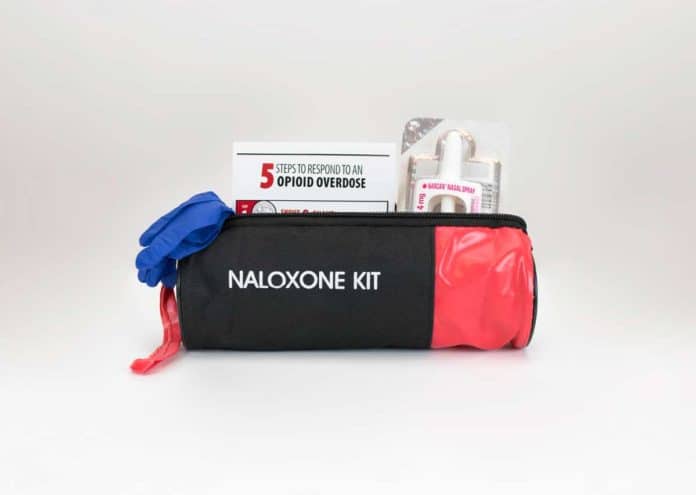EDITOR’S NOTE: Manitoulin Island businesses and consumers have often raised concerns over the relatively high cost of shipping goods to the Island, especially when compared to farther distances on mainland routes. The Expositor is working to better understand why this is the case and what can be done to manage the situation.
MANITOULIN—In the face of high and rising shipping costs, Manitoulin Island businesses often have to adjust their operations to ensure they can be profitable despite the added expenses.
To better explain how courier costs can impact a company’s operations, a Sudbury-based business owner requested to share their experience with shipping their company’s products to Manitoulin Island. This, they said, would highlight the real-world impacts of the high costs associated with shipping products to locations considered remote.
This individual’s concerns prompted The Expositor to look deeper into the state of shipping goods to Island destinations. This newspaper has agreed to not name them because of fears that it may impact their ability to conduct business in the future.
The business owner explained that Manitoulin Island is off of the main shipping routes so it is considered an away destination by transport companies. This means, in order to serve the locations, the shipping companies often hire special contractors at extra cost.
This individual said that with the factor of corporate consolidation, the problem is only getting worse over time.
“I like to call it President’s Lack of Choice, because you see it in the food business especially,” they said.
The person said they formerly worked closely with Muskoka Delivery Service to fulfill orders to their customers.
“(Muskoka) had excellent price coverage for Eastern Ontario, including the Island and up to Timmins,” they said. “Since then, prices have gone up 20 or 30 percent at least.”
The Expositor was unable to obtain historical price data for delivery companies but the business owner compiled a list of shipping price estimates (based on that business’ rates) to a handful of Ontario locations through two major shipping outfits—FedEx and Purolator.
For that company to ship a case of its goods to Espanola, the base charge it quoted was $15.80 through FedEx and $12.05 on Purolator. The same goods being sent to Little Current would incur a price of $35.59 on FedEx and $27.11 through Purolator.
Shipping the same case to St. Thomas, for instance, would cost $19.89 on FedEx and $17.16 through Purolator.
For various on-Island destinations, however, the story changes slightly—eastern Manitoulin destinations tend to hover around the same price on Purolator, increasing as the destination moves west past Mindemoya. For FedEx, though, on-Island destinations are all priced the same.
“There’s something very prejudicial against the Island with couriers. I’ve taken it up with a representative from Purolator from Sudbury. He looked into it and said there was nothing he could do because prices are set in Toronto. As far as they’re concerned, Manitoulin is an away place,” the business owner said.
They also said that based on shipping estimates to a customer on the Nova Scotia coast, shipping costs would be cut in half if they shipped two 25-pound cases instead of just one.
“Now I’ve got to try to get our customers to buy two cases at once instead of one. The silliness of it,” they said.
Kerry Bowerman at Manitoulin Chrysler said he has seen prices going up over the last three to four years. That business uses Purolator for many of its parcels.
“It ends up being, for example if we need a bumper, fender or something, usually $100 to $140 to have it shipped here. Espanola is a fraction of that price apparently, at least that’s what I hear,” said Mr. Bowerman.
Andy Campbell, owner of Campbell Heating, said he has also seen steady price increases to shipping costs.
“I have to figure the freight into the costs of the equipment I’m purchasing. I stock quite a bit, so I’ll buy as many as eight furnaces at a time to keep the costs down. But, then I’m stuck with the overhead of owning the equipment until it does sell. Either way, we don’t have the convenience of living in Sudbury and running to the supplier as we need it,” said Mr. Campbell.
That added cost of overhead in storing materials ultimately gets passed to the consumer and can be well over $100 added onto the cost of a $5,000 furnace.
“We’re forced to hold a huge amount of inventory in stock of materials that are not readily available locally or within a reasonable distance. Not only that, but you have to have a shop and storage facilities for all this stuff. That does not come cheap,” said Mr. Campbell.
Consolidating shipments is a tactic also employed by RedBow Floor and Wall Fashions sales manager Sara McDonald.
“We try to do all our shipments in one, especially for ordering parts or something for our customers, so we can split the costs among many orders. We also try to put that into our product rates, so the costs are still covered but not as an extra charge,” said Ms. McDonald.
However, in her line of work with consumers whose personal tastes vary widely, this is not as easily accomplished as standardized equipment like furnace parts.
“We have to stock those items to be able to give the best prices. Especially where we are, nobody wants the same thing so it’s impossible to keep that stock for the simple fact that we don’t have the room. And if we did order everything that way, we might sit on the product for years before it sells,” she said.
“We try to be accommodating for everybody, but it can be frustrating for customers,” said Ms. McDonald.
There is some hope for Island businesses in the form of smaller, independent companies that operate with lower overhead, including services used by some of the businesses discussed above.
Some companies that are not even in the courier business have found themselves assuming the roles of delivering goods to Island businesses and consumers and may be the key to sustainability despite the high shipping costs to Manitoulin Island.
The onset of the COVID-19 pandemic since this story was first written has only further exacerbated the challenging realities of shipping goods to and from Manitoulin Island. A future story in this newspaper will explore how the pandemic has impacted Island businesses in regards to their shipping requirements for their daily operations.





